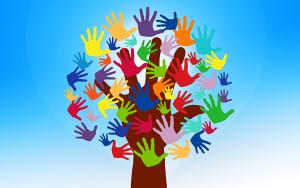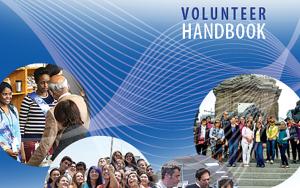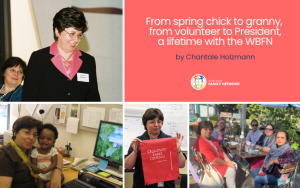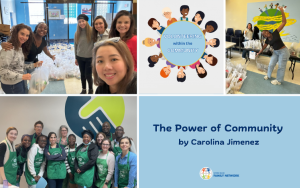Domestic Abuse tips—The cycle of violence
In many cases, violence in abusive relationships follows a predictable cycle. The “cycle of violence” consists of three phases.
Phase 1-Tension Building
In the first phase, tension builds in the relationship. Victims report their partners becoming increasingly irritable, frustrated, and unable to cope with every-day stresses. The abuser may lash out at the victim at this time, but generally stops and becomes apologetic.
In the first phase, tension builds in the relationship. Victims report their partners becoming increasingly irritable, frustrated, and unable to cope with every-day stresses. The abuser may lash out at the victim at this time, but generally stops and becomes apologetic.
In this phase, the victim typically attempts to please the abuser by becoming agreeable, nurturing or staying out of the way. S/he assumes responsibility for controlling the anger, often using denial as a defense or minimizing the inevitability of the beating and the fear. The victim may believe that s/he can control the violence and has some control over what happens. This requires denying anger, which grows with each incident.
Some victims report reaching a point where they are unable to suffer the growing tension. A victim may even provoke a beating to at least have some sense of control over the inevitable. Their reward is not the beating, but the love and attention of their apologetic partners during Phase 3, and their relief that Phase 1 has ended.
The abuser is aware, at some level, that his or her behavior is wrong, and begins to fear that the victim will leave. The abuser’s fears are reinforced by the victim’s coping strategy of withdrawal and avoidance. The abuser becomes increasingly demanding, jealous and possessive of the victim in an attempt to prevent the victim from leaving.
Phase 2—A battering incident
In the process of teaching the victim a lesson, the abuser becomes enraged. Victims often report that they know that fighting back only provokes more violence, although some use this time to release some of their own anger. Only the abuser can end Phase 2; it is dangerous for helpers to step in during a battering.
In the process of teaching the victim a lesson, the abuser becomes enraged. Victims often report that they know that fighting back only provokes more violence, although some use this time to release some of their own anger. Only the abuser can end Phase 2; it is dangerous for helpers to step in during a battering.
It is important for the victim to have a safe place to go during this phase. Once the battering incident is over, many victims deny the seriousness of their injuries and deny their own terror as well as the reality that a similar battering could happen again.
Phase 3—A honeymoon phase
In the third phase of the cycle of violence, the abuser exhibits kind and loving behavior toward the victim. Being more than ever afraid that the victim will leave, a male who has battered a woman may become extremely charming. He is sorry and convinces the victim and himself that his behavior will change.
In the third phase of the cycle of violence, the abuser exhibits kind and loving behavior toward the victim. Being more than ever afraid that the victim will leave, a male who has battered a woman may become extremely charming. He is sorry and convinces the victim and himself that his behavior will change.
A battered woman may want desperately to believe that her suffering is over. She convinces herself that the “good” side of the dual personality is the “true” side. Somehow, the “bad” side will disappear. Her partner’s loving behavior during this phase is her reinforcement for staying in the relationship.
The victim is most likely to seek help now, but it is also the most difficult time for her to leave the abuser. The victim believes that if the first two phases are somehow removed, Phase 3 will remain. S/he does not see this phase as a temporary part of the violence.
It is suggested that during the cycle of violence, some victims develop a form of depression in which they become psychologically paralyzed. This is known as “learned helplessness.” Despite their attempts to feel in control of their partner’s behavior, they have learned that what they do has no effect on what happens to them. They feel unable to control the abuse and helpless to leave.
The three phases of domestic violence feed on one another. Denial, a powerful emotional defense, keeps the cycle going. Both partners use denial. Abusers avoid responsibility for their violent behavior by denying it has happened. Victims try to protect themselves and the relationship by forgetting the violence. A victim may often deny the very real danger in which s/he lives.
The cycle of violence begins again. With each completion of the cycle, the incidents of violence increase in both frequency and intensity.
Some Facts About Children Exposed to Domestic Violence
- Children exposed to domestic violence desperately need to feel that they and their parent/caretaker who is being abused are safe.
- Children–especially very young children are present in the overwhelming majority of domestic violence police emergencies.
- Many parents minimize or deny the presence of children while the mothers are being assaulted. However, interviews with children of battered women reveal that (the children) have seen, heard and can describe detailed accounts of violent behavior that their mothers or fathers never realized they had witnessed.
- Girls living in homes where there is domestic violence are also at risk of being sexually abused.
- Parental kidnapping is one of the more serious manifestations of abusers’ refusal to be stopped (more than 50% of child abductions result from domestic violence).
Some of the Common Reactions of Children Exposed to Domestic Violence
- Isolation–Children from violent homes may also have problems with their peers; they may be too aggressive and use some of the same control tactics that the abuser uses, and consequently become isolated from friends. A sense of shame and a need to hide the chaos at home from others is likely to affect their ability to express their feelings openly. They may feel they have to put on a mask to appear happy and normal when in the public eye.
- Feeling responsible for the abuse–A child exposed to domestic violence might think “If I had been a good boy/girl, daddy wouldn’t hit mommy.” This happens especially if parents are fighting over methods of disciplining the child.
- Helplessness–A child exposed to domestic violence may feel passive and dependent on others because of being unable to protect himself/herself or the abused parent.
- Guilt for not stopping the abuse–A child may also experience guilt about not stopping the abuse even though it is beyond the child’s control.
- Substance abuse and other delinquent behaviors–Children exposed to domestic violence often have problems with school and social adjustment, higher rates of delinquency and aggression, problems with attachment, problems with substance abuse, and higher rates of suicide attempts. Many adolescent males are arrested or injured in the process of protecting their parent from the abusing parent/caretaker. Children, especially teens, may also run away, attempt suicide and/or abuse alcohol.
- Eating and sleeping disorders–A child who witnesses domestic violence may exhibit a fear of sleeping and have nightmares or dreams of danger.






